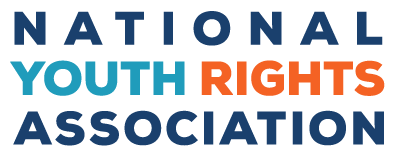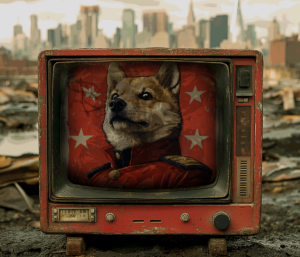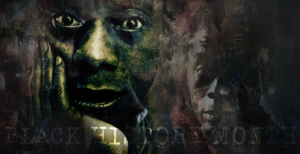In this essay, I’m going to talk a bit about three different philosophies of Youth Liberation, problems that are likely to arise between them, and how each is basically responding to a different (and important) aspect of adultism.
I. THREE FLAVORS OF YOUTH LIBERATION
There are lots of different ways to approach Youth Liberation. However, I think three particular philosophies (flavors if you will) are bound to manifest within the movement: youth equality, youth power, and youth culture. I’ll characterize them briefly.
1. “Youth equality” activists tend to explain adultism in terms of stereotypes and discrimination. Adults harm youth because they have bad ideas about them; adults fail to see shared humanity. Solutions may involve questioning double-standards, or trying to be “age-blind”, living without assumptions.
2. “Youth power” activists tend to explain adultism in terms of the history of youth being treated like human property. Adults unjustly claim the right to command young people’s obedience. Liberation projects might include taking away adults’ right to spank, changing the power structure in schools, winning the vote.
3. “Youth culture” (or “youthcentrist”) activists tend to think about adultism in terms of adult repression of youth culture. Young people have their own ways of being: e.g. playful, dyed hair, music choices, swearing, etc. Liberation involves embracing youth culture and creating alternative spaces where it can flourish, like free-schools and recreation centers.
II. “EQUALITY” / “POWER” / “CULTURE” IN OTHER MOVEMENTS
I think these three philosophies are guaranteed to manifest within the Youth Liberation movement because they’ve manifested in other movements: feminism, black civil rights, and queer activism, for instance. I’ll take a moment to show the similarities.
Feminism: In the second wave of feminism (feminism since 1970), the “equality” perspective is embodied by women concerned with androgyny, challenging stereotypes about what women “are like”, joining traditionally male professions, and the Equal Rights Amendment. …The “power” perspective has been promoted most strongly by the battered women’s movement. They talk about violence as a means of control, the history of marriage as a transfer of human property from a father to the new husband, and the fact that we’ve yet to have a female president. …The “culture” perspective has focused on communes and women-only gatherings (e.g. the Michigan Women’s Festival) and revaluing women’s supposedly natural qualities (e.g. nurturing, mothering, empathy).
Black civil rights: The “equality” perspective, again, is characterized by a focus on stereotypes, discrimination, and aspiring to be “color-blind”. The “power” perspective focuses on the history of slavery, unjust laws, and organizing political pressure (like the Montgomery bus boycott). The “culture” perspective, or “afrocentrism”, deals with things like discovering your family’s original pre-slavery names, embracing African music and spirituality, reclaiming kinky hair as beautiful, etc.
Queer activism: The “equality” perspective promotes the idea that “we’re just like you [heterosexuals]”, in every way except choice of partner. The “power” perspective focuses on the ways in which gays, lesbians, bisexuals, transsexuals, transgendered, intersexed people and other sexual minorities have been forcibly kept down and harmed: queer-bashing, anti-sodomy laws, preemptive laws against same-sex marriage, religious leaders calling us “abnormal and perverse”. “Culture” -oriented activists focus on community events like Pride marches, reclaiming closeted historical figures, and creating queer safe zones.
III. PREDICTABLE CONFLICTS WITHIN THE MOVEMENT
I wanted to really spell out how the Equality / Power / Culture philosophies manifest in each of these movements so I could make my next point more forcefully: there’s always tension within a movement between people with different emphases. It’s predictable, because beginning from their different starting points, activists develop these ideas to their logical — and mutually exclusive — conclusions. Three predictable conflicts strike me as particularly common in all these movements: bridge-building vs. confrontation, partnership vs. separatism, and assimilation vs. cultural pride.
Bridge-Building vs. Confrontation: Youth “equality” activists may want to reveal our shared humanity by developing personal friendships with adults. Youth “power” activists on the other hand, may favor a more confrontational style, letting authentic anger convey the harm that particular adults are doing. The “power” activists can end up feeling that the “equality” activists are cozying up with the enemy — whereas the “equality” activists feel like the others are alienating potential allies.
Partnership vs. Separatism: “Equality” activists are likely to favor organizations that have both adult and youth members, all with equal votes; it’s in sync with the ideal of adults and youth working well together. “Culture” activists are likely to favor youth-only spaces, where they can celebrate youth-identified values, qualities, and activities without interruption. “Equality” activists may see youth-only space as discriminatory against adults; “culture” activists may sense that adults’ presence restrains youth from being as radical as they would otherwise choose to be. [“Power activists” may go either way, seeing the usefulness of adults’ resources, but also the danger of adults asserting too much control.]
Assimilation vs. Cultural Pride: This conflict usually comes up when there’s an opportunity to be in front of TV cameras. “Culture” activists will probably want to be as much themselves in front of the camera as possible, showing pride in looking like a youth rather than changing how they look to be accepted. “Equality” activists seem to have an interest in presenting an impression of maturity, responsibility, etc.; this grows out of the idea that the best qualities in adults and youth are the same, and have nothing to do with age. “Power” activists may go either way; there’s also, though, an appreciation of the respect that a suit and tie garners. Obviously, each vying to promote their own version of what youth are like, conflict is going to arise.
IV. THE LOGIC BEHIND THESE THREE CATEGORIES
Personally, I have a fairly strong bias towards the youth power variety of Youth Liberation. However, I think that all three approaches to YL have their own value; each addresses part of the truth about what adultism is. So, while I’m interested in making sure that youth power gets at least a fair hearing, I want to avoid arguments about which is the one and only true path.
I think the reason why “equality”, “power”, and “culture” forms of activism appear in multiple movements — along with the accompanying conflicts — is because these categories say something important about the structure of oppression in general. That is, these aren’t artificial categories that I’m identifying — they are intimately rooted in the nature of the problem.
Adultism (like racism, sexism, etc.) is a very broad and general word. It encompasses lots of different injustices and social dynamics. It’s just a way of pointing at a collection of phenomena; in itself, it doesn’t say why those phenomena exist. To have a more sophisticated discussion about adultism, you need to create new vocabulary. In my opinion, three of the more important terms that you can add to your vocabulary are age dualism, adultarchy, and adultcentrism.
Age Dualism: The tendency to emphasize (and exaggerate) how different youth and adults are. Examples: …The ways in which clothing, television, breakfast cereals, music, and everything else, is divided into “adult stuff” or “kids’ stuff”. …In the wake of the Columbine massacre, a fair number of news stories ran about the science of how teens’ brains are different from those of adults.
Adultarchy: A system of government in which people are divided into adults and youth, and power is vested exclusively in the hands of the adults. [You need name a thing in order to begin imagining its alternative!] …It’s the way that federal, state, county, and city governments’ charters are drawn up. …It’s the way that public schools and private families are structured.
Adultcentrism: The view that adults are the standard, “normal” human being; youth are seen deviations from the norm, their differences typically being interpreted as flaws. For instance: …The word “human” evokes the mental image of an adult — you need to specify if you are talking about a youth. …The field of “psychology” deals with adults; the study of young people is qualified as “developmental” psychology. …Stairs, light switches, buses, toilets, the international symbols for “men” and “women” on bathroom doors — are all designed with adults in mind.
It seems to me that “equality”, “power”, and “culture” activists each address one of these dynamics — I mean predominantly, not exclusively. “Equality” tends to deal with age dualism. “Power” tends to deal with adultarchy. “Culture” tends to deal with adultcentrism.
V. THE OPPRESSION TRIANGLE
Some time ago, I developed an educational tool for describing how these dynamics of adultism interrelate with each other. I call it the oppression triangle.
Imagine that you’re looking at a piece of graph paper, with a horizontal X-axis and a vertical Y-axis drawn on it. Now imagine that you’re holding two boxes, one labeled “adults”, and the other labeled “youth”. Put both boxes on the very center of your grid, where the two axes meet.
When adults make a big deal about youth being different from themselves, it’s like youth are being pushed away. Adults are distancing (dissociating) themselves from youth. So, let’s push the “youth” box away from the “adult box”, horizontally along the Y-axis. This represents age dualism.
When adults claim power over youth, or say something bad about youth to justify the power-grab, it feels like they’re putting youth “down”. So, now lets move the “youth” box downward on the graph. This represents both the practice of adultarchy, and the supporting ideology of adult supremacism.
So, now we have “adults” sitting there in the center of the graph, and “youth” over to the right and below. It’s sort of like adults are at the center of the universe. Adultcentrism, which is kind of a combination of dualism and adultarchy, is represented by the diagonal distance from the center point over and down to where the “youth” box sits now.
Draw a horizontal line from the center to where we first pushed the “youth” box to, a vertical line down from there, and then a diagonal line back to the start, and you have yourself a triangle. …It’s hard to do the model justice without actually drawing it, but to me it does a nice job of showing how three dynamics work together, in a way that makes intuitive sense.
VI. WRAP-UP
To summarize…
* I suggest that it’s useful to identify three flavors of youth liberation activism: youth equality, youth power, and youth culture.
* I see “equality”, “power”, and “culture” as flavors of activism that appear in other movements. I used feminism, black civil rights, and queer activism to demonstrate the point.
* It’s useful to think about the greater youth liberation movement in terms of these flavors because it lets you predict and facilitate your way through conflicts that are likely to arise.
* I argue against trying to pick one flavor as the “right” way by showing that each addresses an important dynamic of adultism.
* I concluded by offering a model, “the oppression triangle”, that I find useful for conceptualizing how the three dynamics relate to each other.





